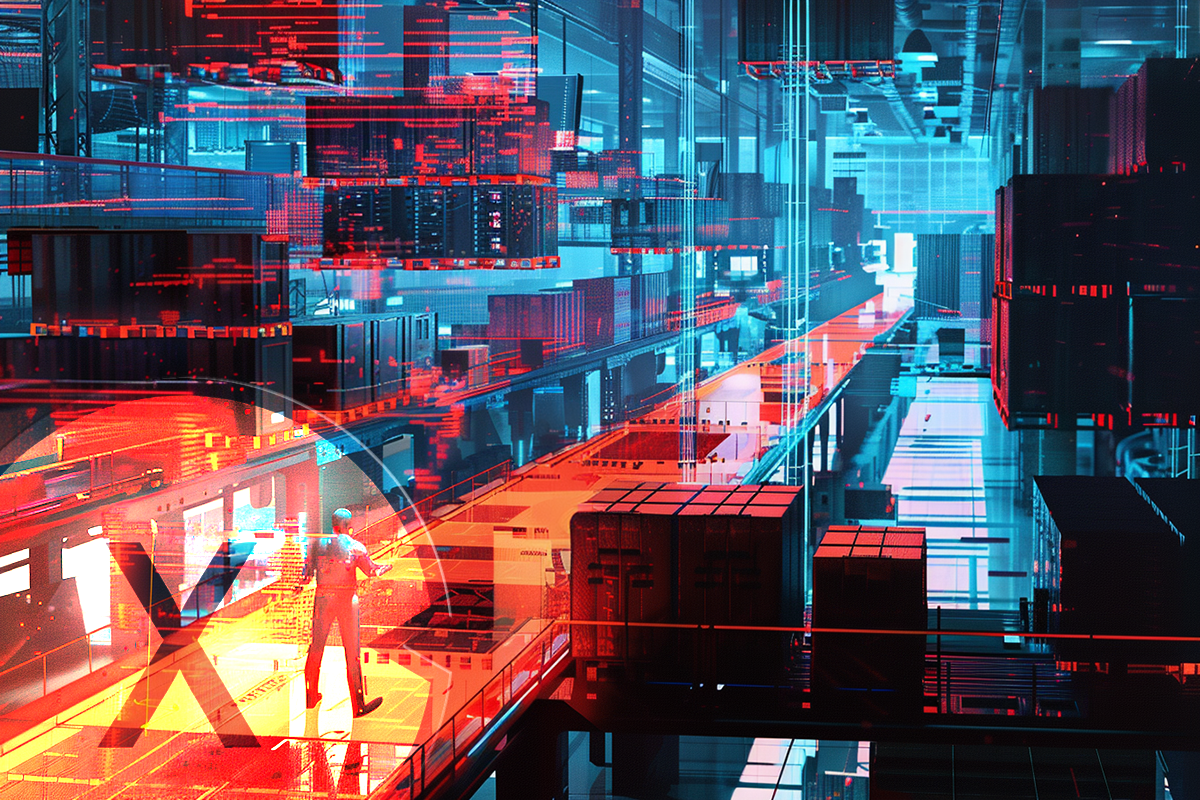
Facts for nearshoring and buffer storage – logistics optimization and cost reduction – Image: Xpert.Digital
Resilient supply chains: Using challenges as an opportunity for innovation
Future-proof logistics strategies: The integration of nearshoring and buffer storage for logistics optimization and cost reduction in smart city and smart factory solutions
In an increasingly networked and digitalized world, the efficiency of supply chains and logistics processes is becoming increasingly important. Global events such as pandemics, geopolitical tensions and trade conflicts have exposed the vulnerability of traditional supply chains. Companies are faced with the challenge of making their logistics strategies future-proof in order to remain competitive and be able to react to unforeseen events. The integration of nearshoring and buffer storage offers promising approaches to optimizing logistics and reducing costs, especially in the context of smart city and smart factory solutions.
The importance of nearshoring in modern logistics
Nearshoring refers to the relocation of production or service processes to geographically close countries. In contrast to offshoring, in which companies outsource their processes to distant countries, nearshoring enables closer collaboration and faster response times.
Advantages of nearshoring
1. Reduced transportation costs and times
The proximity of the production sites reduces both the costs and the time for transporting goods. This results in faster time to market and increases flexibility in responding to market changes.
2. Cultural and linguistic proximity
A common or similar culture and language facilitates communication and collaboration between companies and their nearshoring partners.
3. Stronger control and quality assurance
Geographical proximity allows for more frequent visits and closer monitoring of production processes, which can improve the quality of products.
4. Reducing risks
Political and economic stability in nearby countries can reduce the risk of supply chain disruptions.
Buffer storage as a risk minimization strategy
Buffer inventory, also known as safety stock, is additional inventory that companies hold to balance fluctuations in supply and demand. They serve as protection against delivery delays, production downtimes or sudden increases in demand.
Advantages of buffer storage
1. Increased security of supply
By maintaining additional inventory, companies can ensure that they can serve their customers even during unexpected events.
2. Flexibility in response to changes in demand
Buffer warehouses make it possible to respond quickly to increasing demand without having to wait for longer production or delivery times.
3. Reducing production downtime
If there are supply bottlenecks for raw materials or components, the production process can be maintained through existing buffer stocks.
Synergies between nearshoring and buffer storage
The combination of nearshoring and buffer storage offers companies the opportunity to make their supply chains more efficient and resilient.
1. Optimized warehousing
Due to the proximity of the production sites, buffer stocks can be managed more effectively. Deliveries can be made more frequently and in smaller quantities, reducing the need for large inventories.
2. Faster response times
If necessary, additional deliveries can be organized quickly, further reducing the reliance on large buffer warehouses.
3. Cost effectiveness
The reduced transport costs and times through nearshoring combined with optimized inventory levels lead to significant cost savings.
Integration into Smart City and Smart Factory solutions
With the increasing digitalization and networking of cities and factories, new opportunities for logistics optimization are opening up.
Smart city and logistics
Smart cities use technologies such as the Internet of Things (IoT), big data and artificial intelligence to make urban processes more efficient. In terms of logistics this means:
1. Intelligent traffic control
Real-time data allows delivery routes and times to be optimized, resulting in lower transport times and costs.
2. Sustainability
More efficient logistics processes can reduce emissions and use more environmentally friendly means of transport.
Smart factory and production processes
Smart factories integrate state-of-the-art technologies into production processes, resulting in more flexible and efficient processes.
1. Automation and robotics
This enables faster production times and reduces reliance on manual labor.
2. Data-driven decisions
By analyzing production data, processes can be continuously optimized.
Synergies with nearshoring and buffer storage
The integration of nearshoring and buffer storage in smart city and smart factory solutions offers the following advantages:
1. Real-time supply chain monitoring
Through IoT and connected systems, companies can monitor their supply chains in real time and respond immediately when necessary.
2. Optimized inventory management
By using AI and big data, inventory levels can be managed more precisely and overstocking can be avoided.
3. Improved customer retention
Faster delivery times and higher delivery reliability lead to happier customers and strengthen customer loyalty.
Challenges and solutions
Despite the numerous advantages, there are also challenges when integrating nearshoring and buffer storage.
challenges
1. Initial investments
Restructuring supply chains and production processes requires initial investments.
2. Complexity of logistics
Coordination between different locations and partners can be complex.
3. Technological requirements
The implementation of smart technologies requires technical know-how and infrastructure.
Solutions
1. Gradual implementation
Companies can approach integration gradually to minimize risks and costs.
2. Collaborate with experts
Working with logistics experts and technology providers can make the transition easier.
3. Employee training
Investing in employee training ensures staff are familiar with new technologies and processes.
Globalization and digitalization
Globalization and digitalization present companies with new challenges, but also offer immense opportunities for those who adapt and integrate innovative solutions. The combination of nearshoring and buffer storage is an effective strategy for future-proofing supply chains, reducing costs and increasing efficiency. In conjunction with Smart City and Smart Factory solutions, companies can not only optimize their own processes, but also contribute to sustainable and intelligent cities and production facilities. It is time to rethink traditional logistics strategies and embrace the possibilities of modern technology and the globalized economy.
Suitable for:
